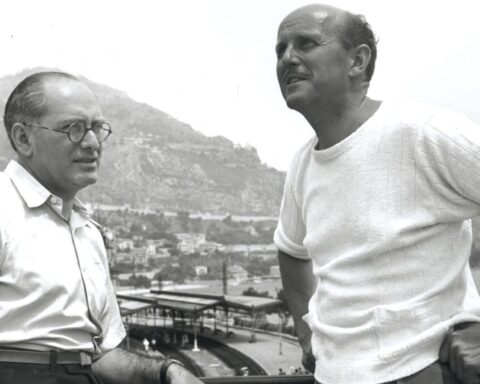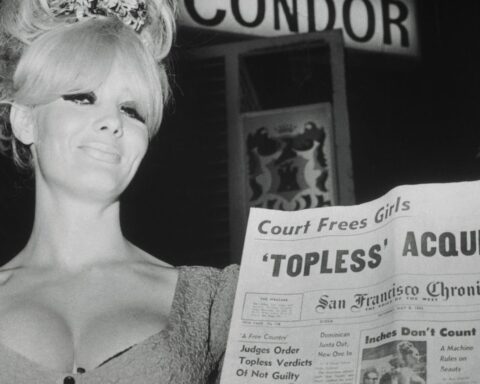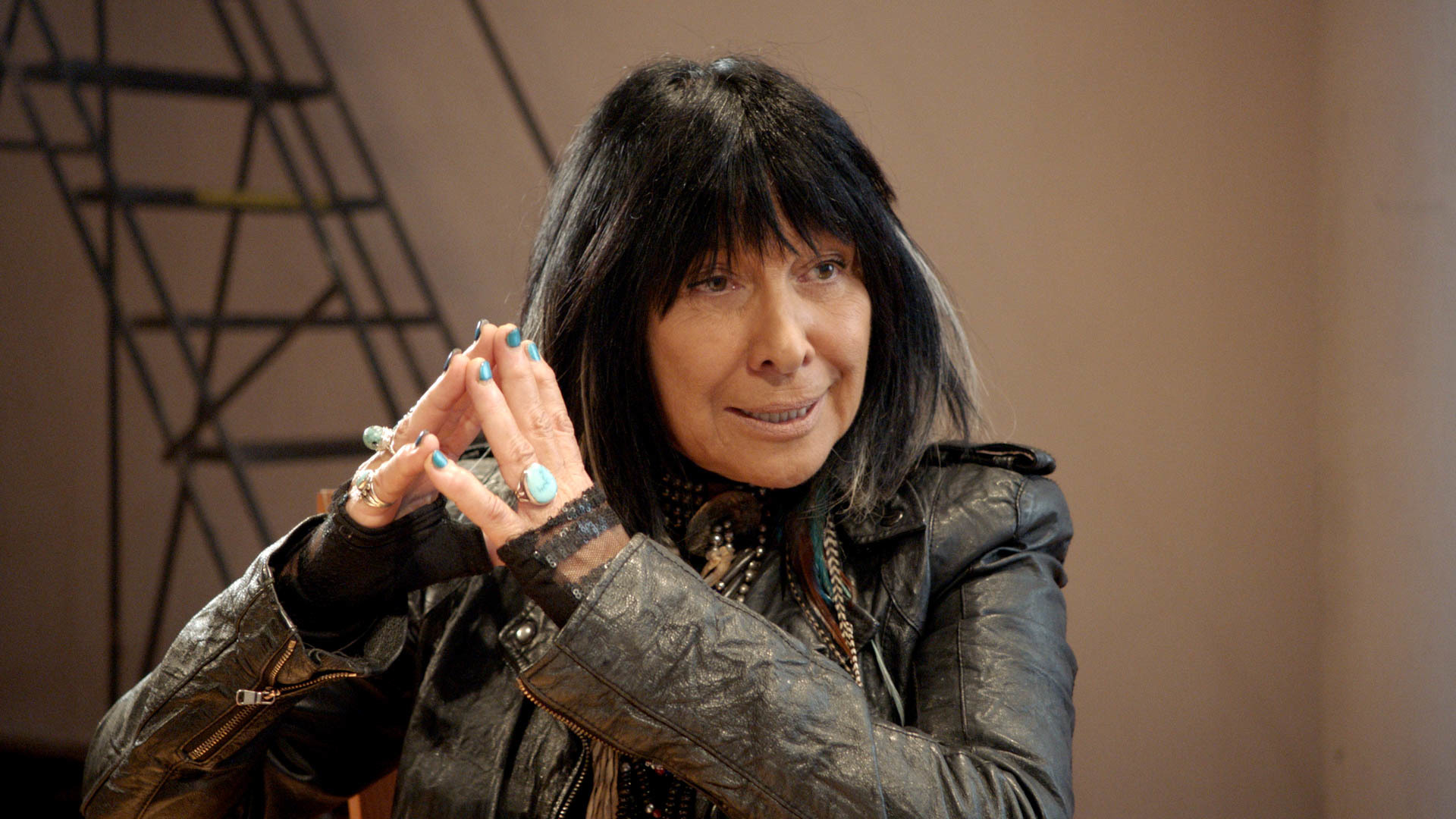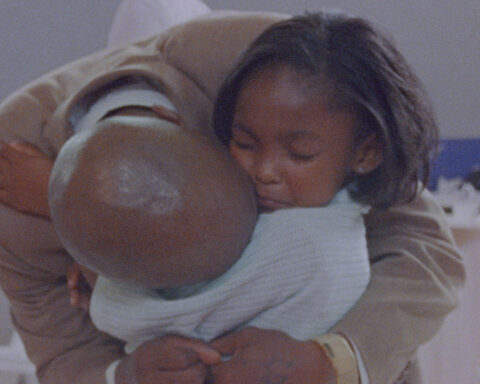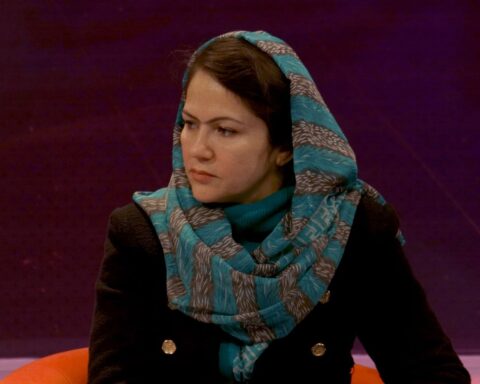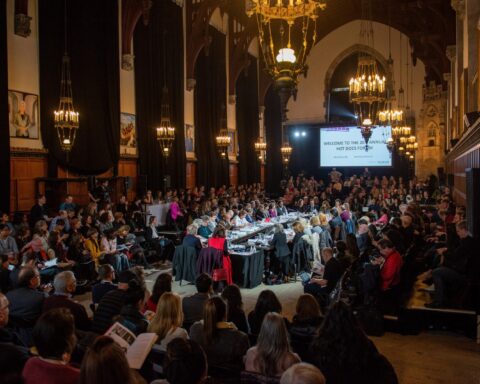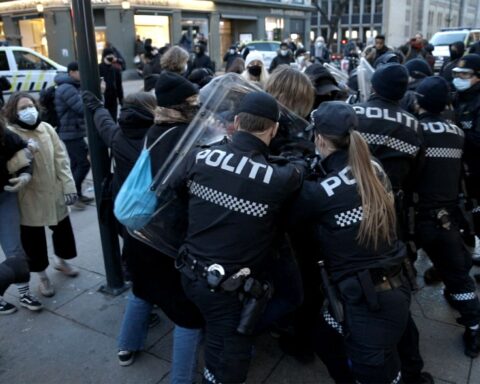Dawson City: Frozen Time
(USA, 120 min.)
Dir. Bill Morrison
It’s amazing to learn that Colin Low and Wolf Koenig’s City of Gold nearly became a greenhouse. The story goes that in 1947, Irene Crayford of Dawson City in the Yukon discovered old glass plate negatives within the walls of her home and sought advice from her employer, an artisan named Dick Diment, on how to remove the emulsion from them so that she could reuse the plates and build a greenhouse. Diment, recognising the historical significance of the plates, exchanged them for new ones and sent the negatives to the National Archives in Ottawa where they caught the eyes of the NFB filmmakers. The rest is history.
The images of City of Gold that nearly became Mrs. Crayford’s greenhouse are the photographs of Eric Hegg, the photographer who documented Dawson City during the turn of the century era of the Gold Rush. Hegg’s pictures include the iconic shots of the Chilkoot pass and the memorable archival stills with which Low and Koenig developed the aesthetic of quickly zooming and panning across photographs—a technique that inspired many filmmakers including the great Ken Burns. This fact is just one of the many golden nuggets of film history unearthed in the exceptional Dawson City: Frozen Time from director Bill Morrison. This meticulously crafted archival film offers a treasure trove of images from the silent era and turn-of-the-century Northern life. Anyone with the slightest interest in film history simply must see this documentary.
Dawson City: Frozen Time is the story of the negatives, films, and photographs that were saved and the many images from the silent era that are forever lost. The film begins with an odd story of a pastor, Frank Barrett, digging up the remains of an old swimming pool in the Yukon Territory in 1978. Morrison shows how Barrett, like many men who went up North before him, struck gold. The doc reveals how Barrett discovered a vault of old film reels buried beneath the permafrost and, like Diment, helped save, restore, and preserve invaluable images from history.
Morrison knows he has a pile of riches on his hands here and he gives film buffs an appreciation of these relics from the silent era. The mould, scratches, and marks of decay are a sight to behold. Dawson City: Frozen Time is composed of a tapestry of archival images with the exception of an interview with Michael Gates from Parks Canada and Kathy Jones-Gates from the Dawson Museum, who provide context on the preservation of 372 films from Barrett’s find. 124 of these silent films appear in Dawson City: Frozen Time and the images are extraordinary gems of film history.
The clips highlight the range of cinematic styles that filmmakers and actors developed in the early days of cinema. Tableau shots abound, as does overly theatrical pantomiming, while a few films experiment with tinting and double exposure. There are some major names in these hidden gems too, including Brutality by Birth of a Nation director D.W. Griffith and The Exotic Thief from Tod Browning of Freaks fame. Look closely and you’ll find Oscar-winner Alice Brady in The Lure of Women and Hollywood icon Lionel Barrymore in clips from Wildfire, while the likes of Thomas A. Edison and Douglas Fairbanks appear in snippets from The Butler and the Maid and The Half-Breed, respectively.
Morrison, however, doesn’t merely catalogue the rare finds in a show reel of salvaged movies. The film tells the story of the gold rush and the history of Dawson City through archival images. There are some cases in which Dawson City: Frozen Times pulls out a dozen film clips when merely two or three will do, but one can forgive Morrison for being hesitant to let any of these old movies go to waste. These dramatic films offer visual parallels to the historical tale that Morrison tells through intertitles and snippets of documentaries from the same era. Stories of the violence of the mining town find peers in card games and saloon brawls. Through repetition, parallelism, and association, Morrison conveys how the images that provide entertainment and escapism are also invaluable records of human activity.
It turns out that Dawson City was a hub of cinephilia despite being the last stop on the distribution route for the moving picture shows. The film explains how distributors simply dumped their outdated reels in Dawson City once they got to the end of the line in lieu of paying to ship them back to the USA, and in some cases, theatre owners simply threw the cans of celluloid into the river. Other film buffs are responsible for the images that survive today thanks to personal archives, cramped libraries, and swimming pools use with remarkable efficiency.
Morrison tells the stories behind movie theatres such as the Orpheus and the DAAA Family Theatre, which provided escapes from the cold and the trials of the gold rush. The film finds poignant tragedies in the destruction of the theatres by fire, since early movies were extremely flammable reels. The history of cinephilia and the gold rush deserve credit for the legacy of moviegoing in America. Morrison uses the archival images to explain how the northern gold rush town was the early stomping ground for Alexander Pantages and Sid Grauman, who went on to open some of the most famous theatres in film history: the Pantages Theatres and Grauman’s Chinese Theatre. Dawson City: Frozen Time intimately connects the history of film with the history of the city.
There’s something overwhelmingly moving about seeing these recovered relics tell the stories of movie buffs long passed. The film evokes the many hands that touched these images in shooting, editing, projecting, enjoying, and ultimately preserving of these images. The music by Alex Somers provides a wall-to-wall score that brings goosebumps with its haunting evocation of the ghosts that live within these reels. Doubling as a nod to the scores of the silent era, and as a practical vehicle for storytelling in place of narration, Somers’ affective work provides chills with the same nip as the air of the North.
Dawson City: Frozen Time transports one to an era of history with vivid and remarkable detail, thanks to the beautiful documentary images that accompany the silent works. Morrison doesn’t romanticise the harshness of Northern living and many of these moving images, including invaluable outtakes from City of Gold, convey how the North is a mass of contradictions. It’s a land in which idealism and escapism, like the movies, isn’t the same in reality.
Dawson City: Frozen Time opens Friday, July 21 in Toronto at Hot Docs Ted Rogers Cinema and in Vancouver at VanCity Theatre, and in Ottawa at The ByTowne on July 28.




